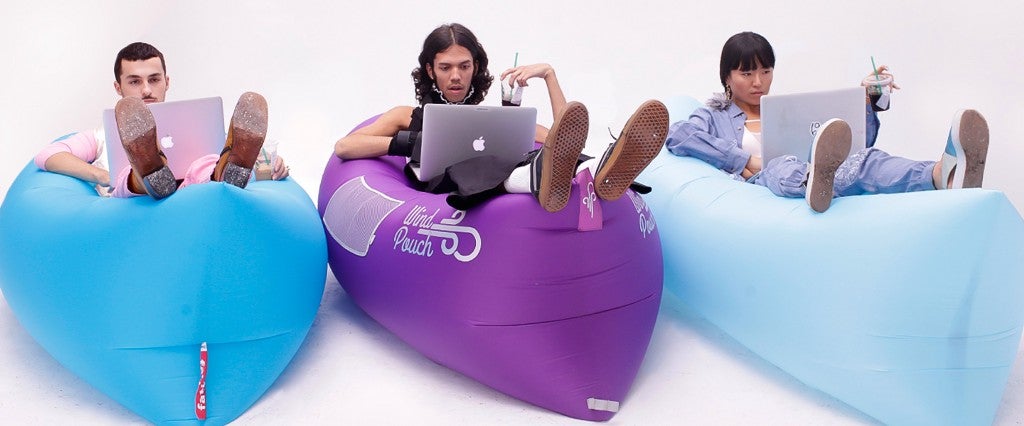George Yu was adrift. Instead of going to pharmacy school, like his Taiwanese parents had wanted, he spent the year after graduating from University of Georgia traveling on the cheap. He paid for his wandering the same way he had paid his way through college: by reselling trendy gadgets sourced from China. First it was e-cigarettes, then hoverboards, then some hair and beauty supplies — his Mandarin helped him cut good deals with factory owners. Cheap flights meant a lot of layovers, and a lot of trying to sleep on airport floors. He found himself wishing there were some kind of lightweight La-Z-Boy he could carry around with him.
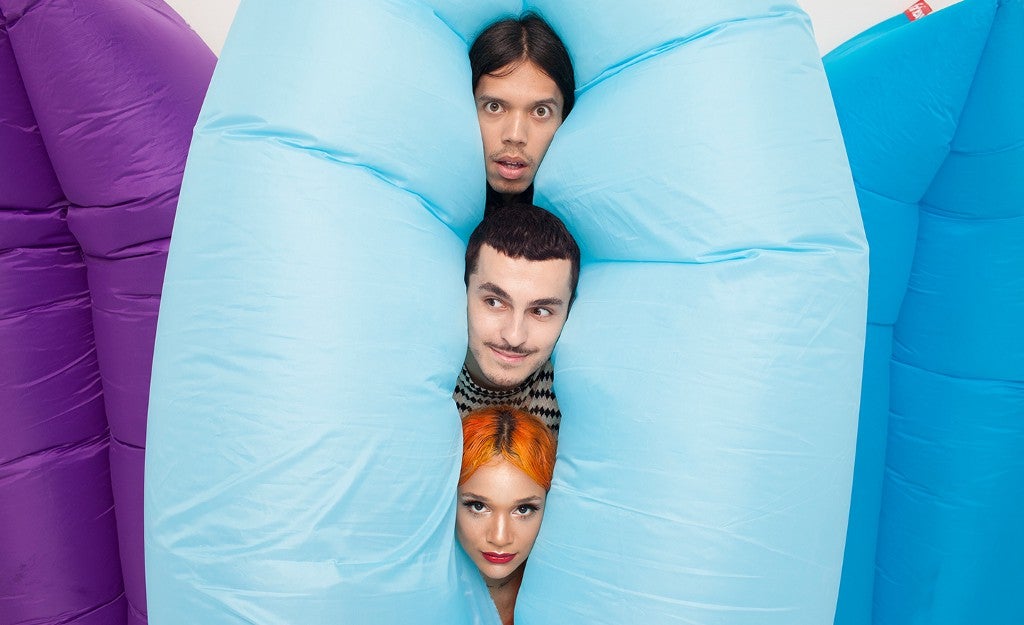
When he stopped moving around and returned home to Macon, Georgia, he started taking flying lessons, just to have something to do. He remembers the precise atmospheric conditions of his inspiration: He was coming down for a crosswind landing, with a strong breeze blowing in at 30 miles from the east, and noticed how the windsock next to the runway was filled up by the gusts.
Something clicked: What if you made a La-Z-Boy that could be inflated by the wind, then somehow keep the air inside? In May 2015, he started talking with his contacts in China to develop a prototype. He called it the WindPouch.

Marjin Oomen was adrift. He was 26, and unhappy with his job. When he saw an ad looking for contestants for a Shark Tank-y game show, “The Best Idea of the Netherlands,” he signed up as a joke — he didn’t have any ideas, let alone the best one. But one night, crashing at a friend’s place after hitting some bars, he tried to lie down on an air mattress, only to have it deflate when he hopped on.
Something clicked: What if he could invent a pump that used his body weight to inflate something else?


He settled on a modified dry bag, the kind used by kayakers and rafters to protect their gear from moisture, figuring that something that could keep water out could also keep air in. His working prototype was square, a meter on each side, and made of clear plastic. On TV, he called it a Camp Airbag, a multifunctional product, both cushion and air pump. He didn’t win for “Best Idea” (he lost to the “always-open door”), but he stuck with the product, adding a nice vinyl outer skin. He called it the Lamzac, playing on the Dutch term for a lazybones, and started manufacturing it in China.
In August 2015, the Lamzac went viral in the Netherlands. In January 2016, it hit the English-speaking Internet. Demand went through the roof, and Oomen teamed up with the Dutch interior design company Fatboy to scale his production.

Matt Richmond was out in the woods. When he and some friends hiked up to a campsite near Asheville, North Carolina, they found that there weren’t enough prime hammock-tying trees for everyone to lounge around together — one friend, John, was stuck swinging way on the other side of the campsite, separate from all his buds.
Later on that day, once dinnertime rolled around, inspiration struck: John scooped some air into his dry bag and sat on it like a big cushion, right by the cluster of hammocked friends. Richmond figured that, if he could only make the dry bag a little bigger, this might be a million-dollar idea. He developed a prototype, called it Kozē, made a video, put it up on Kickstarter on April 11 of this year. Within 24 hours, the campaign had reached its $4,000 goal. Within 48, people had pitched in $40,000. A week later, $132,000.
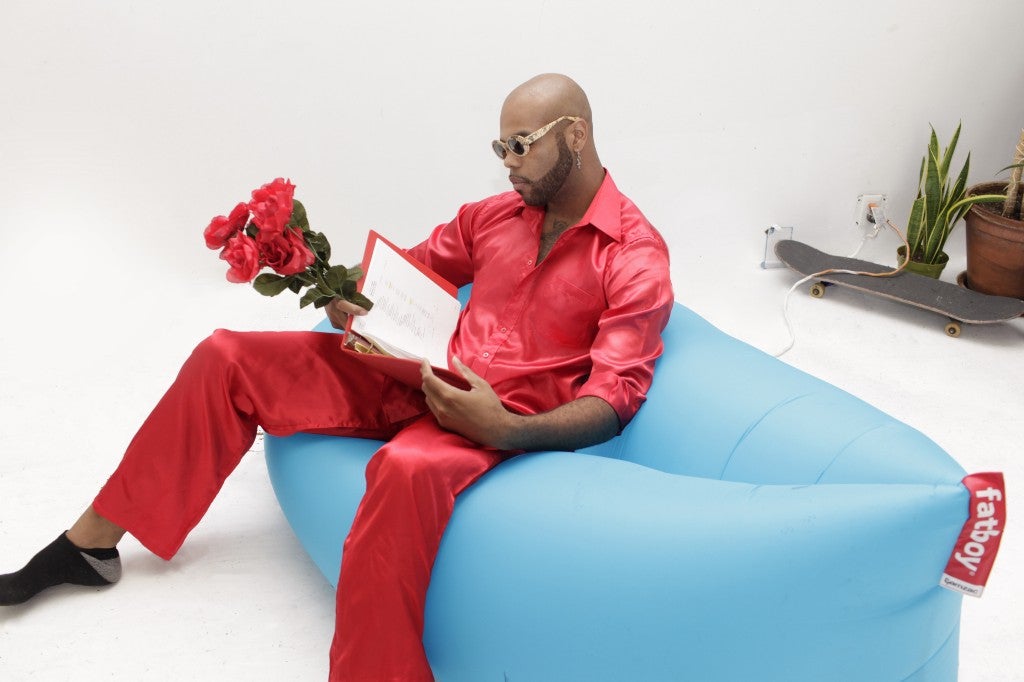
Then Kickstarter shut it down. Matt was deemed to have been full of shit — there was no eureka moment, no John problem, no inspiring campsite (and no comment — he he didn’t respond to my requests for an interview). Kickstarter wouldn’t tell me the precise reason for suspending the campaign, but soon after the Kozē Kickstarter launched, commenters had started pointing out that it was the exact same as the Lamzac. “The creator is presenting someone else’s work as their own,” and “The creator is offering purchased items, claiming to have made them,” are both grounds for Kickstarter campaign suspension.
That same week in late April, a Dutch company called KAISR Original started an Indiegogo campaign selling exactly the same thing. Within a month, people had pledged more than $4 million for KAISR Originals. Soon after, Marjin Oomen’s company Fatboy took KAISR to court for infringing on its European design patent for the Lamzac, and won. KAISR tried to alter the product slightly to get around the ruling, but as of last week, the ruling against them still stands, and the company is in the process of refunding all of its EU Indiegogo supporters. KAISR didn’t even pretend to have an origin story.
And neither did the legions of copycats that had sprung up at the same time, in late March and early April—just in time to make them the weird new thing of summer 2016.
Some of the imitators were equipped with a nice name and a pretty website, like Billow Bag in Ireland, LayBag in Germany, and Laysac in the U.K. Dozens more pulled a name out of a hat — PouchCouch, iLounge, Wreelax, “Self-Inglate Hangout DurableUltra Lounge Sofa Portable Lamzac Inspired” — and registered the URL or set up an Amazon shop. Thousands and thousands of Chinese manufacturers started selling “inflatable loungers” or “air hammocks” on Alibaba, with deep discounts for orders in bulk.

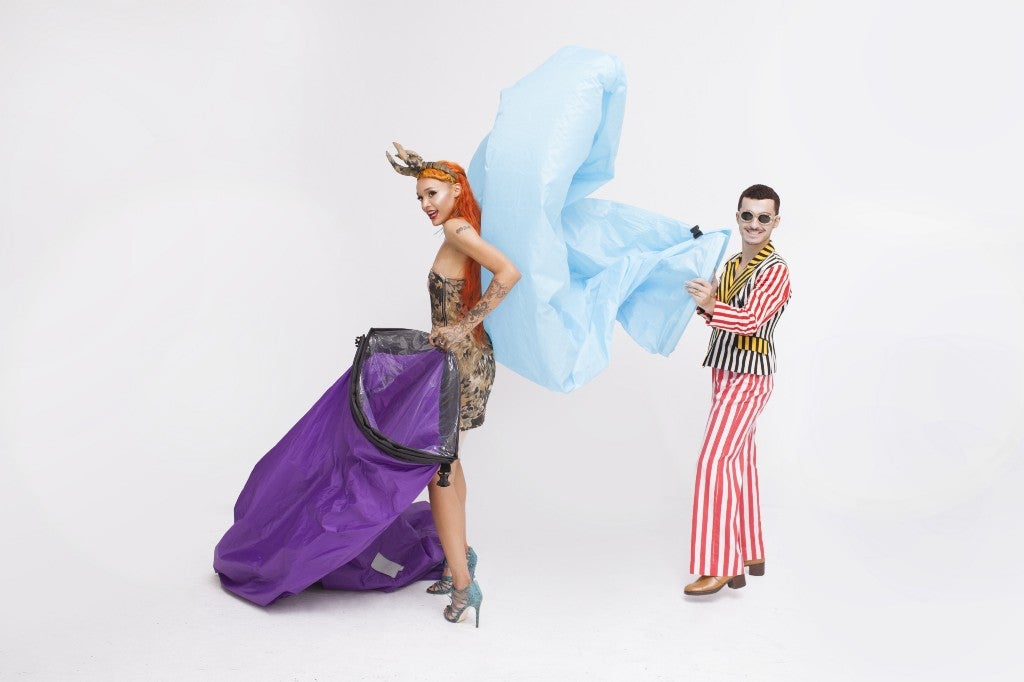
They’re all pretty much the same: two nylon-covered plastic tubes, each open on one end and sewn together to resemble a hot dog bun that you can inflate by waving around in the air. (Like this, or if you’ve never tried it before, probably more like this.) The inflated end result is surprisingly comfy, and supposed to hold air for five or six hours. It is impossible to sit in one without looking at least a little bit smug.
And just like that, before the first Lamzac or WindPouch could ship, the cat was out of the bag, and being xeroxed by anyone who could catch it.
But whose cat was it in the first place? George Yu’s? Or Oomen’s, and by extension, Fatboy’s? And how did it escape so quickly?
In May 2015, Yu took his idea to two factories in China, one in Guangdong and one in Shenzhen, the manufacturing mega-city that produces an estimated 90 percent of the world’s electronics (and a lot of its unwired products, too), to start figuring out how to make his windsock La-Z-Boy a reality. The early attempts were less than inspiring.

“The first prototype lasted only 10 or 15 minutes before it deflated,” Yu said. “I had to send it back.” He and some friends were working on other business ideas at the time, back in Georgia, and given the slow progress on the WindPouch front, he back-burnered the idea. “It didn’t really seem like it was gonna be feasible at the time — I was thinking of giving up on it.”
A few months later, in August, Oomen made a video of happy Hollanders “chilling in the park” in his Lamzacs. It became big in the Netherlands, but barely registered outside of the Dutch-speaking world. But when Oomen translated his site into English in January 2016, the video went viral again, this time in the much larger host body of the Anglophone internet.
A friend saw the video in a Buzzfeed post, and sent a link to Yu. He did not feel very chill. “I was like — wait, that’s the same idea I had,” Yu said. “This was not a coincidence.” He called the factories he had been working with in China to see what had happened.
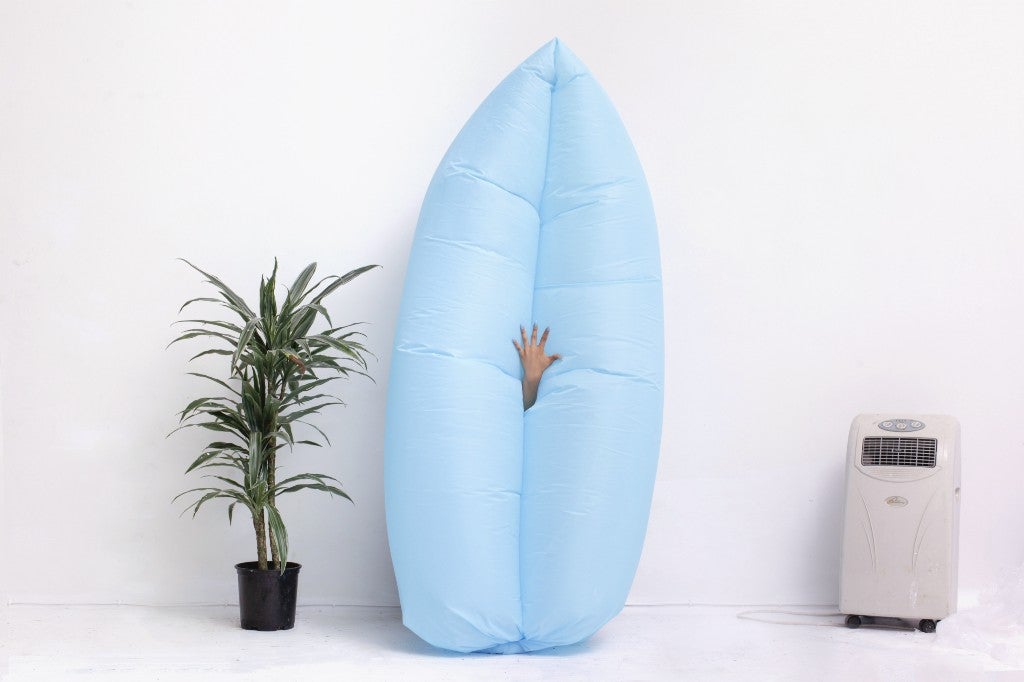
“Long story short: Never give an idea to China, or anyone in China, without patenting it, or overseeing everything.”
Yu believes he got shanzhai’d — a term that originally referred to pirated versions of brand-name products (and literally means “mountain stronghold,” with the lawless implications of our “Wild West”), but has come, in Shenzhen, to refer to the almost open-source ecosystem of hyperspeed manufacturing, where factories share ideas, pump out prototypes, and bring products to market within weeks. Someone had brought his design to Oomen.
Fatboy insists that Oomen independently invented the Lamzac in the Netherlands, as a natural progression from his smaller dry bag-based cushions that had premiered on Dutch TV in 2010. Paula Masters, president and CEO of Fatboy USA, was very clear: “We are the original.”
When I brought up the possibility of invention via shanzhai, Masters pointed to a series of videos charting the rise of the Lamzac that the company has recently posted on YouTube. One video shows the evolution of Oomen’s prototypes: single bag, like on “Best Idea,” then two bags clipped together into a kind of folding chair, then one big sausage, then two tubes zipped together, before finally hitting on the current design.
I sent the video to Yu. He remained unconvinced. “The product is not very unique, when you break it down — it’s really just a glorified dry bag,” he said. So could it just be a coincidence? A case of parallel invention? Two men on two different continents, both taking a message from the zeitgeist and sending it off to Shenzhen?
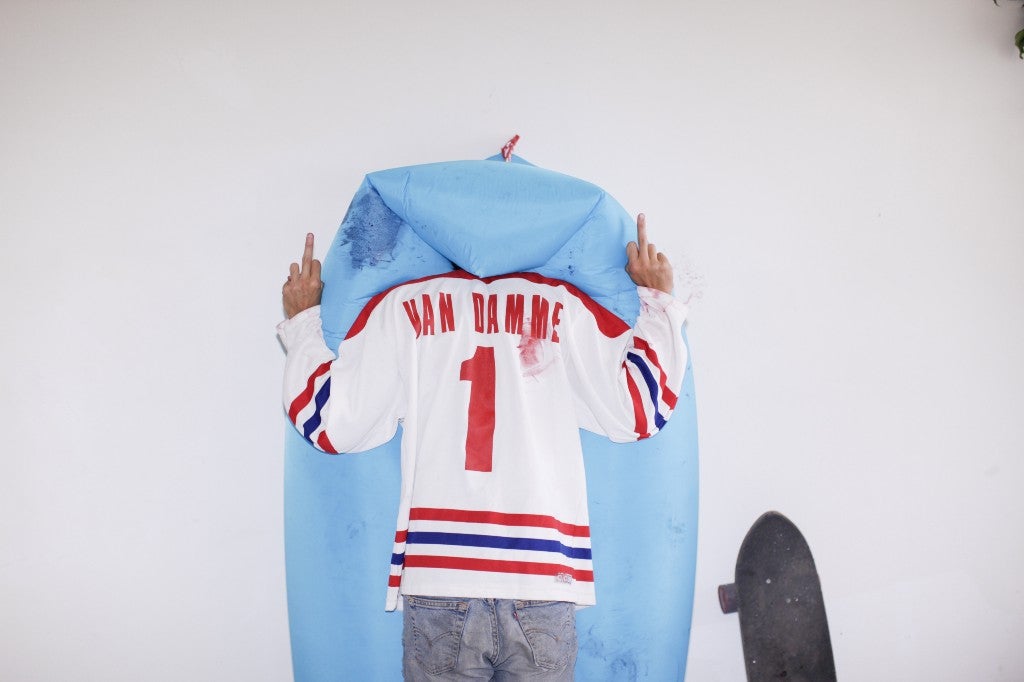
“I think it’s a very slim possibility that we were working on the same idea at the same time in the same shape,” Yu said. “We kind of essentially screwed up. Or actually, I screwed up, when I entrusted this idea to a company over there.”
Earlier this month, Fatboy USA was granted a design patent on the Lamzac within the U.S. — the same type of patent that allowed it to stop KAISR from shipping its product to its Indiegogo customers within the EU. “We are aggressively serving each and every infringer,” Masters said.
But a design patent is pretty easy to get around in the USA. They only protect the exact appearance of a certain product to the extent that an “ordinary observer,” i.e., some schmo, can’t tell it apart from a supposed infringer. Add a little ruffle, or a pair of googly eyes, and bingo: patent un-infringed.
Still, Yu hopes it doesn’t come to court (and as of last week, he hadn’t heard from Fatboy). “I believe we were the first to come up with this,” Yu said. “We’re not here to back down, but it’s expensive — the only people who win are the lawyers.”
He has his sights set on the future, anyway. A future where he can sleep all night in an airplane terminal, snuggled up in a WindPouch. “We’re working on a second generation that stays inflated for 12 hours,” Yu said, “and accessories, that I can’t really talk about.”
This time, he’s patenting everything he can, and taking extra security measures. “We aren’t releasing it to market yet because I’m doing it right this time, and securing the manufacturing process before we release any details.”
That means security guards at the factory where the final product comes together, and third-party auditors who visit each factory in the process to make sure they’re not leaking any designs.
Though as he’s learned, “nothing’s ever 100 percent secure.” Not in Shenzhen, and not in a world that demands slightly shiny, extremely comfy air tubes to lounge on, inflated by the breeze.
